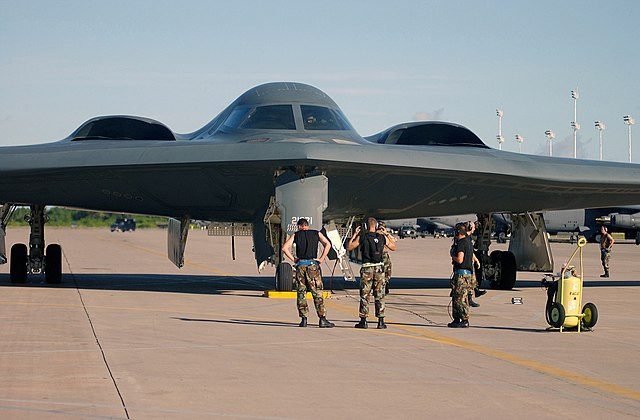The United States conducted a series of airstrikes against Iran-backed Houthi militants in Yemen late Wednesday, utilizing B-2 stealth bombers for the first time in its campaign. According to Defense Secretary Lloyd Austin, the strikes targeted five underground weapons storage sites near Yemen's capital, Sana'a, and in Saada, the traditional stronghold of the Houthis. The aim was to dismantle the militant group's capacity to launch attacks against military and civilian vessels in the region, particularly in the Red Sea and Gulf of Aden.
"This was a unique demonstration of the United States' ability to target facilities that adversaries seek to keep hidden, no matter how deeply buried," Austin said in a statement. He emphasized that the employment of the B-2 stealth bomber underscores the U.S.'s capability to strike anywhere, anytime. The bombers, which carry a heavier payload compared to fighter jets typically used in the region, provide the U.S. with a strategic advantage in targeting fortified underground facilities.
The decision to deploy the B-2 bombers marks a significant escalation in the ongoing conflict, as the U.S. aims to degrade the Houthis' capabilities. "We are determined to protect our interests and those of our allies," Austin added, stressing that the U.S. will continue to counter the Houthis' aggression. The strikes, he noted, were approved by President Joe Biden in response to more than a year of attacks by the Houthis on U.S. and allied vessels.
The Houthis, also known as Ansar Allah, are a fundamentalist Shia group aligned with Iran and have been increasingly active in the region. The militant group has targeted commercial shipping lanes in the Red Sea, claiming their actions are in solidarity with Hamas and a response to Israel's military operations in Gaza. Houthi spokesperson Nasruddin Amer condemned the U.S. airstrikes, stating on social media that "America will pay the price for its aggression on Yemen."
The U.S. Central Command (CENTCOM) confirmed that both Air Force and Navy assets participated in the operation. According to three U.S. defense officials, the facilities targeted housed advanced weapons, including components used in attacks against ships. CENTCOM has reported an uptick in such assaults over the past year, which have led to the deaths of multiple mariners and heightened risks in one of the world's busiest maritime trade routes.
Earlier this year, the Houthis launched multiple ballistic and cruise missiles aimed at U.S. naval vessels and international commercial ships. Deputy Pentagon Press Secretary Sabrina Singh noted that while none of the missiles hit U.S. ships, the attacks demonstrated the Houthis' escalating capabilities and willingness to target international assets. "These attacks show the need for continued vigilance and a robust response," Singh said, adding that the U.S. has intercepted numerous missiles and drones over the past several months.
The Red Sea and Gulf of Aden are critical trade routes, carrying roughly 12% of global commerce. The Houthis' frequent attacks have caused disruptions, including environmental damage when a Greek-flagged vessel was set ablaze and began leaking oil in August. The Pentagon warned that such incidents have the potential to trigger significant environmental disasters.
This latest strike is not the first time the U.S. has acted against the Houthis; however, it is the most substantial escalation involving the use of long-range strategic bombers. In recent months, U.S. forces have targeted Houthi missile and drone launch sites to limit their operational reach. The use of B-2 bombers indicates a shift in strategy aimed at severely limiting the Houthis' underground weapon storage capabilities.
The airstrikes also come as the broader Middle East faces escalating tensions. In addition to its operations in Yemen, the U.S. has deployed advanced anti-missile systems to Israel following Iran's missile barrage in October. The Houthis, as part of Iran's regional alliance, have fired missiles at Israel and continued to attack shipping in the Red Sea, further increasing the risk of wider regional conflict.
In response to these threats, the U.S. has significantly bolstered its military presence in the region. According to reports, the deployment includes a carrier strike group, guided missile destroyers, and a wide array of aircraft, including attack planes and fighters. The U.S. has stated that these measures are intended to deter further aggression from Iran-backed groups like the Houthis and Hezbollah.
The Houthis have long been a destabilizing force in Yemen, where they seized control of the northern region in 2014. Despite years of Saudi and UAE-led coalition efforts to dislodge them, the group remains entrenched, exerting significant control over territories with much of Yemen's population. The Saudi-led coalition has imposed a blockade and conducted air campaigns, but these measures have led to widespread humanitarian crises without achieving a decisive victory.






